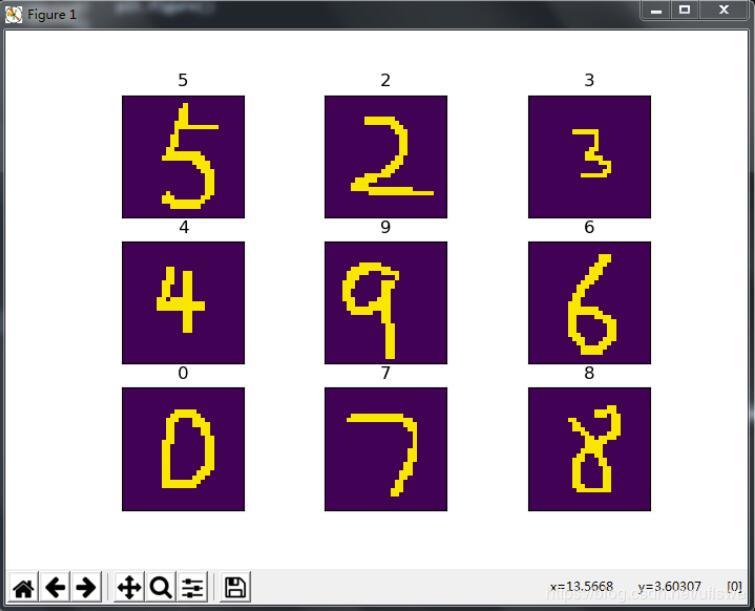本文实例为大家分享了Tensorflow之MNIST CNN实现并保存、加载模型的具体代码,供大家参考,具体内容如下
废话不说,直接上代码
# TensorFlow and tf.keras import tensorflow as tf from tensorflow import keras # Helper libraries import numpy as np import matplotlib.pyplot as plt import os #download the data mnist = keras.datasets.mnist (train_images, train_labels), (test_images, test_labels) = mnist.load_data() class_names = ['0', '1', '2', '3', '4', '5', '6', '7', '8', '9'] train_images = train_images / 255.0 test_images = test_images / 255.0 def create_model(): # It's necessary to give the input_shape,or it will fail when you load the model # The error will be like : You are trying to load the 4 layer models to the 0 layer model = keras.Sequential([ keras.layers.Conv2D(32,[5,5], activation=tf.nn.relu,input_shape = (28,28,1)), keras.layers.MaxPool2D(), keras.layers.Conv2D(64,[7,7], activation=tf.nn.relu), keras.layers.MaxPool2D(), keras.layers.Flatten(), keras.layers.Dense(576, activation=tf.nn.relu), keras.layers.Dense(10, activation=tf.nn.softmax) ]) model.compile(optimizer=tf.train.AdamOptimizer(), loss='sparse_categorical_crossentropy', metrics=['accuracy']) return model #reshape the shape before using it, for that the input of cnn is 4 dimensions train_images = np.reshape(train_images,[-1,28,28,1]) test_images = np.reshape(test_images,[-1,28,28,1]) #train model = create_model() model.fit(train_images, train_labels, epochs=4) #save the model model.save('my_model.h5') #Evaluate test_loss, test_acc = model.evaluate(test_images, test_labels,verbose = 0) print('Test accuracy:', test_acc)模型保存后,自己手写了几张图片,放在文件夹C:\pythonp\testdir2下,开始测试
#Load the model new_model = keras.models.load_model('my_model.h5') new_model.compile(optimizer=tf.train.AdamOptimizer(), loss='sparse_categorical_crossentropy', metrics=['accuracy']) new_model.summary() #Evaluate # test_loss, test_acc = new_model.evaluate(test_images, test_labels) # print('Test accuracy:', test_acc) #Predicte mypath = 'C:\\pythonp\\testdir2' def getimg(mypath): listdir = os.listdir(mypath) imgs = [] for p in listdir: img = plt.imread(mypath+'\\'+p) # I save the picture that I draw myself under Windows, but the saved picture's # encode style is just opposite with the experiment data, so I transfer it with # this line. img = np.abs(img/255-1) imgs.append(img[:,:,0]) return np.array(imgs),len(imgs) imgs = getimg(mypath) test_images = np.reshape(imgs[0],[-1,28,28,1]) predictions = new_model.predict(test_images) plt.figure() for i in range(imgs[1]): c = np.argmax(predictions[i]) plt.subplot(3,3,i+1) plt.xticks([]) plt.yticks([]) plt.imshow(test_images[i,:,:,0]) plt.title(class_names[c]) plt.show()测试结果

自己手写的图片截的时候要注意,空白部分尽量不要太大,否则测试结果就呵呵了
以上就是本文的全部内容,希望对大家的学习有所帮助,也希望大家多多支持python博客。
-
<< 上一篇 下一篇 >>
标签:numpy matplotlib
Tensorflow之MNIST CNN实现并保存、加载模型
看: 1314次 时间:2020-09-17 分类 : python教程
- 相关文章
- 2021-12-20Python 实现图片色彩转换案例
- 2021-12-20python初学定义函数
- 2021-12-20图文详解Python如何导入自己编写的py文件
- 2021-12-20python二分法查找实例代码
- 2021-12-20Pyinstaller打包工具的使用以及避坑
- 2021-12-20Facebook开源一站式服务python时序利器Kats详解
- 2021-12-20pyCaret效率倍增开源低代码的python机器学习工具
- 2021-12-20python机器学习使数据更鲜活的可视化工具Pandas_Alive
- 2021-12-20python读写文件with open的介绍
- 2021-12-20Python生成任意波形并存为txt的实现
-
搜索
-
-
推荐资源
-
Powered By python教程网 鲁ICP备18013710号
python博客 - 小白学python最友好的网站!